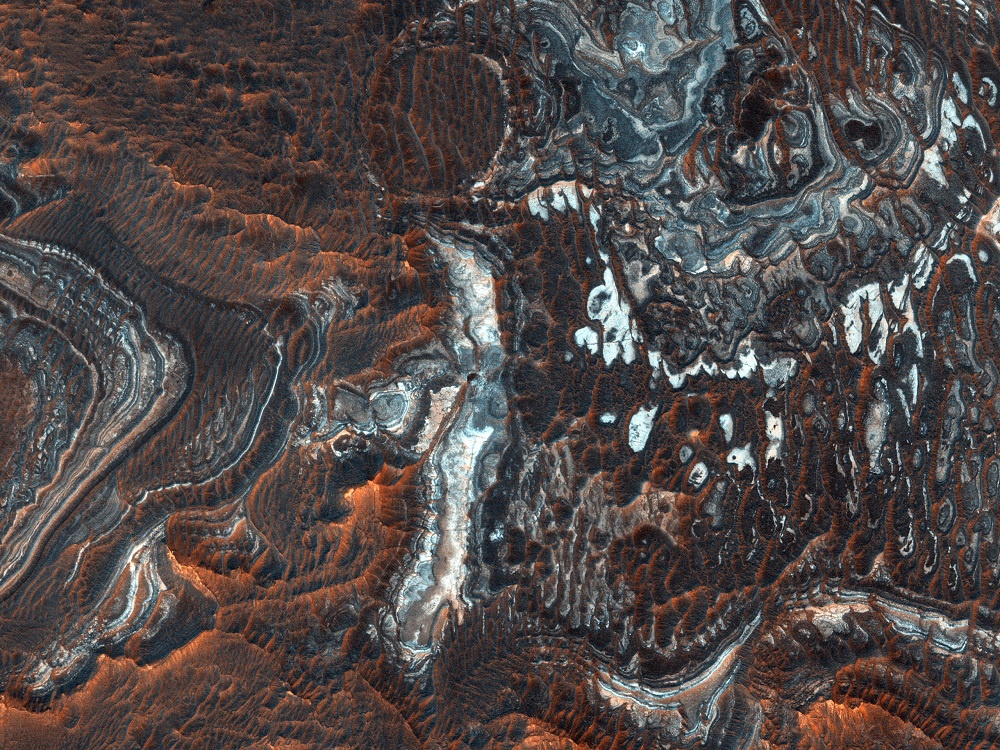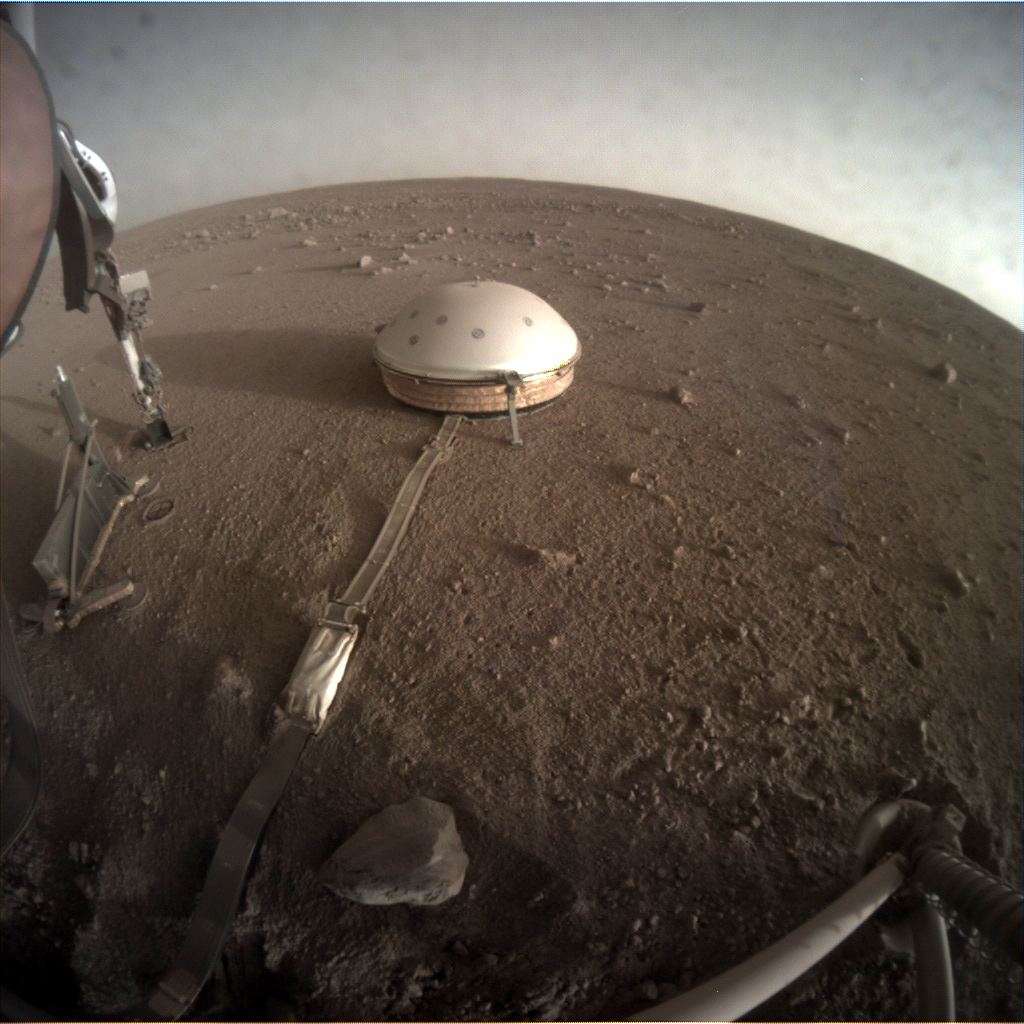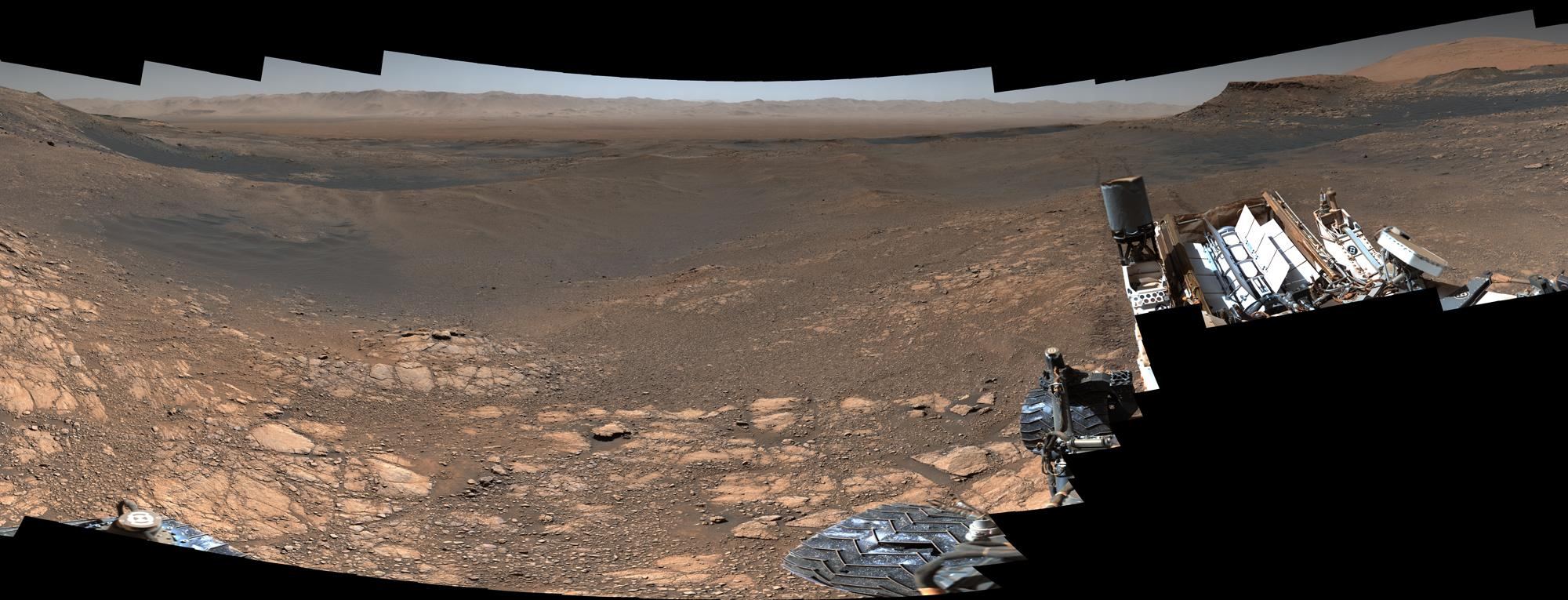The Mars Reconnaissance Orbiter (MRO) delivers once again! Using its advanced imaging instrument, the High Resolution Imaging Experiment (HiRISE) camera, the orbiter captured a breathtaking image (shown below) of the plains north of Juventae Chasma. This region constitutes the southwestern part of Valles Marineris, the gigantic canyon system that runs along the Martian equator.
Continue reading “Another Incredible Picture of Mars, This Time From a Region Just Outside Valles Marineris”Good News! The New Strategy of Using InSight’s Arm to Push the Mole Seems to be Making Progress.
There’s at least one small bit of good news in these challenging Covid-19 times. And it’s playing out on the surface of Mars. In a brief Tweet, NASA says that using InSight’s robotic arm to push the Mole into the ground is working, somewhat.
Continue reading “Good News! The New Strategy of Using InSight’s Arm to Push the Mole Seems to be Making Progress.”Curiosity Finds Organic Molecules That Could Have Been Produced by Life on Mars

What do coal, crude oil, and truffles have in common? Go ahead. We’ll wait.
The answer is thiophenes, a molecule that behaves a lot like benzene. Crude oil, coal, and truffles all contain thiophenes. So do a few other substances. MSL Curiosity found thiophenes on Mars, and though that doesn’t conclusively prove that Mars once hosted life, its discovery is an important milestone for the rover. Especially since truffles are alive, and oil and coal used to be, sort of.
Continue reading “Curiosity Finds Organic Molecules That Could Have Been Produced by Life on Mars”Mars 2020’s New Name is… “Perseverance”
Sojourner, Spirit, Opportunity, Curiosity… For decades, NASA’s robotic rovers have explored the surface of Mars looking for clues about its past and subsequent evolution. With every success and discovery, their names became part of the public discourse, infiltrating our vocabulary the same way iconic figures like Armstrong, Einstein, and Hubble did. But what of the next rover that will be sent to explore Mars this summer?
NASA has serious plans for the Mars 2020 rover, the next installment in the Mars Exploration Program after its sister-rover Curiosity. But before this mission can launch and add its impressive capabilities to the hunt for life on Mars (past and present), it needed a proper name. Thanks to Alexander Mather (a grade 7 student from Burke, Virginia), it now has one. From this day forward, the Mars 2020 rover will be known as the Perseverance rover!
Continue reading “Mars 2020’s New Name is… “Perseverance””Curiosity’s Latest Mars Panorama, Captured in 1.8 Billion Glorious Pixels
The Curiosity rover on Mars has captured the most detailed panoramic image ever taken of the Red Planet’s surface. The image is made from over 1,000 images, containing 1.8 billion pixels of the Martian landscape, with 2.43 GB of high-resolution planetary goodness.
“This is the first time during the mission we’ve dedicated our operations to a stereo 360-degree panorama,” said Curiosity Project Scientist Ashwin Vasavada.
Continue reading “Curiosity’s Latest Mars Panorama, Captured in 1.8 Billion Glorious Pixels”Magnetic Fields Around Mars InSight are 10x Stronger than Scientists Expected
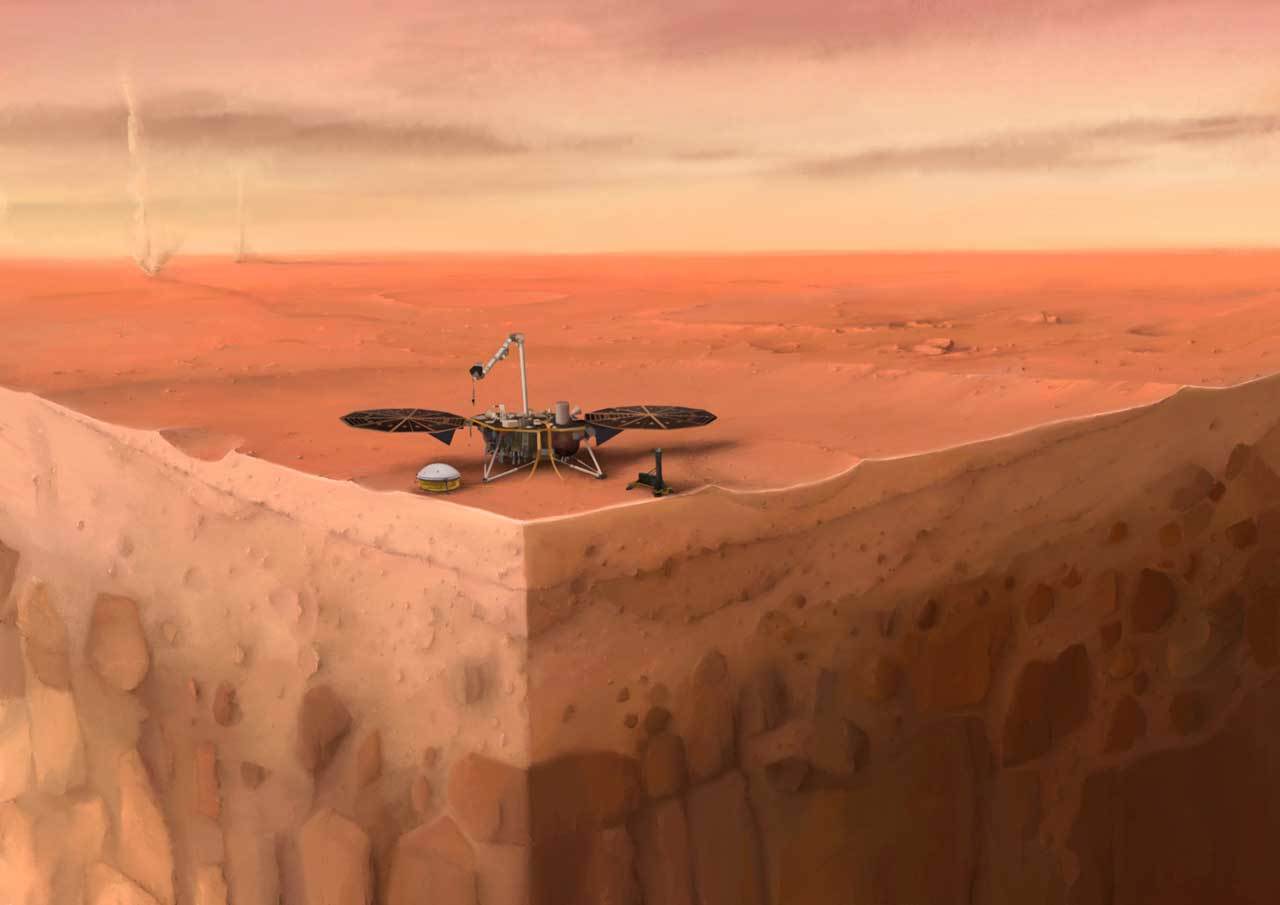
When NASA’s Interior Exploration using Seismic Investigations, Geodesy and Heat Transport (Insight) lander set down on Mars in November of 2018, it began its two-year primary mission of studying Mars’ seismology and interior environment. And now, just over a year and a half later, the results of the lander’s first twelve months on the Martian surface have been released in a series of studies.
One of these studies, which was recently published in the journal Nature Geosciences, shared some rather interesting finds about magnetic fields on Mars. According to the research team behind it, the magnetic field within the crater where InSight’s landed is ten times stronger than expected. These findings could help scientists resolve key mysteries about Mars’ formation and subsequent evolution.
Continue reading “Magnetic Fields Around Mars InSight are 10x Stronger than Scientists Expected”Look down into a pit on Mars. The caved-in roof of a lava tube could be a good place to explore on the Red Planet
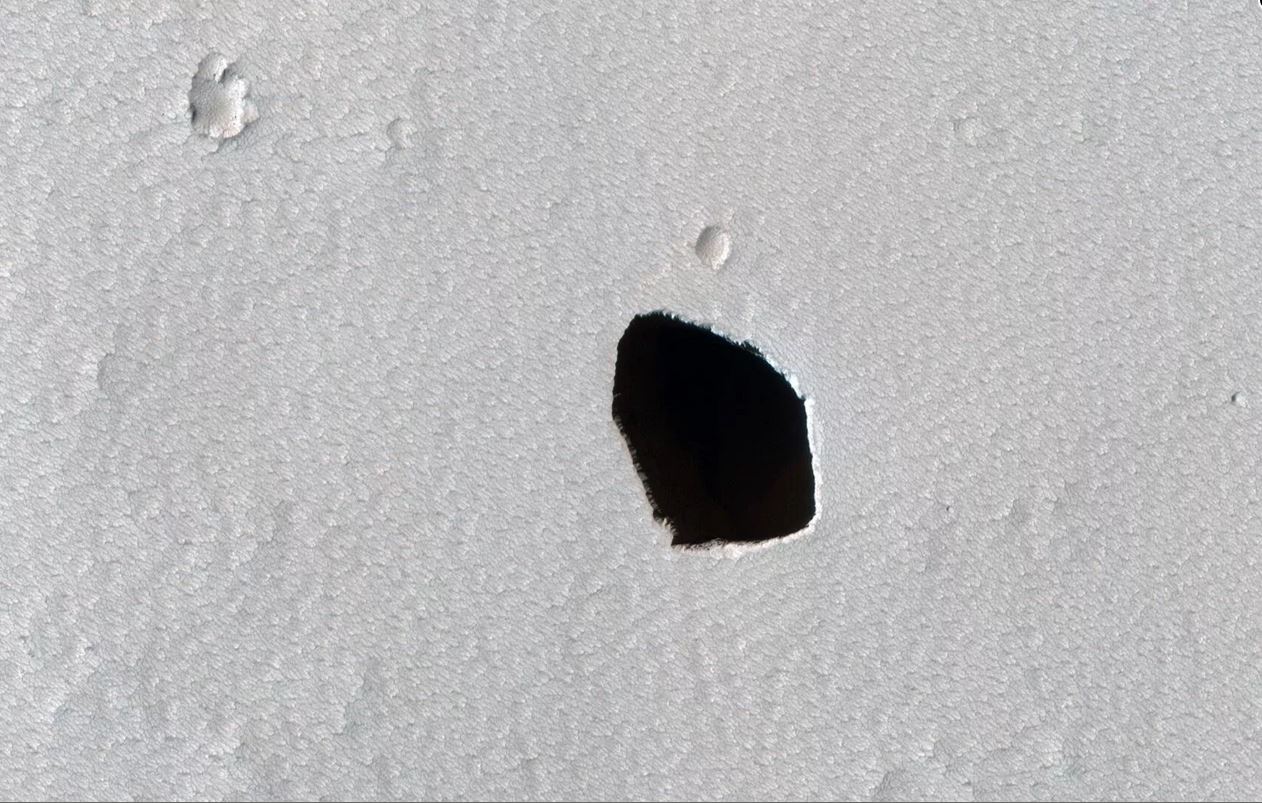
Want to look inside a deep, dark pit on Mars? Scientists and engineers using the HiRISE Camera on board NASA’s Mars Reconnaissance Orbiter have done just that.
From its orbit about 260 km (160 miles) above the surface, HiRISE can spot something as small as a dinner table, about a meter in size. But can it look inside a cave-like feature on the Red Planet and actually resolve any details inside this pit?
Continue reading “Look down into a pit on Mars. The caved-in roof of a lava tube could be a good place to explore on the Red Planet”InSight has been Sensing Dust Devils Sweep Past its Landing Site
The InSight lander has been on the surface of Mars for about a year, and a half dozen papers were just published outlining some results from the mission. Though InSight’s primary mission is to gather evidence on the interior of Mars—InSight stands for Interior Exploration using Seismic Investigations, Geodesy, and Heat Transport—the lander also keeps track of Martian Meteorology. A new paper reports that InSight has found gravity waves, swirling dust devils, and a steady background rumble of infrasound.
Continue reading “InSight has been Sensing Dust Devils Sweep Past its Landing Site”After a Challenging First Year on Mars, InSight Shows Us that Mars is Seismically Active
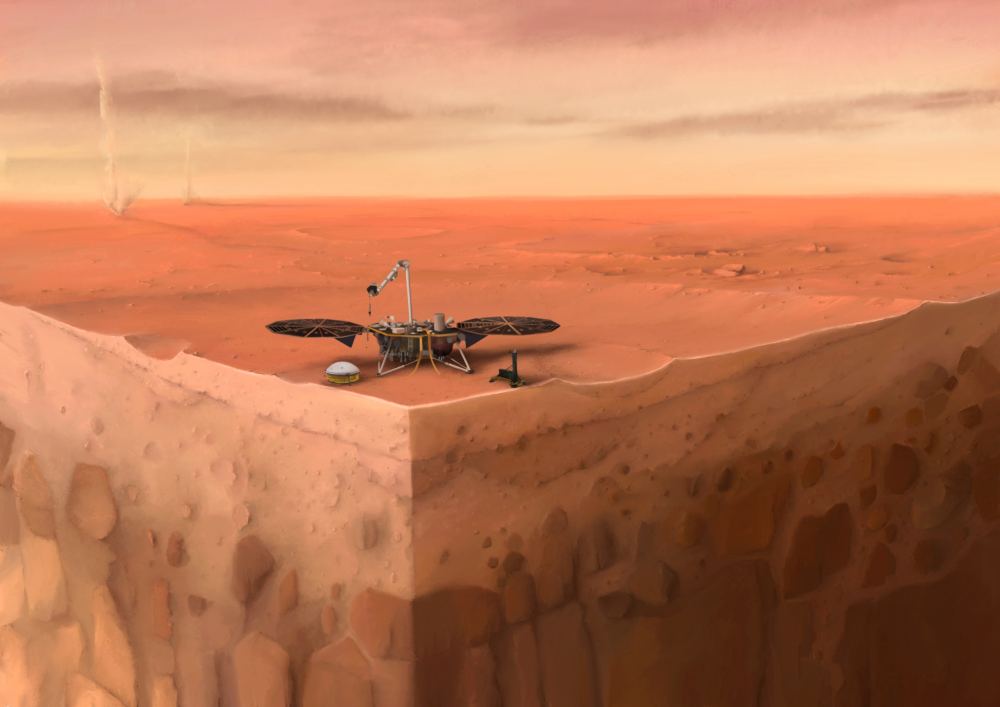
The NASA and DLR InSight lander has been on Mars for over a year now. The mission has faced significant challenges getting its HP3 (Heat Flow and Physical Properties Package) into the subsurface, but the spacecraft’s other instruments are working as intended. Now, researchers have published six papers outlining some of the mission’s scientific results.
Continue reading “After a Challenging First Year on Mars, InSight Shows Us that Mars is Seismically Active”Dust Devils Have Left Dark Streaks All Over This Martian Crater
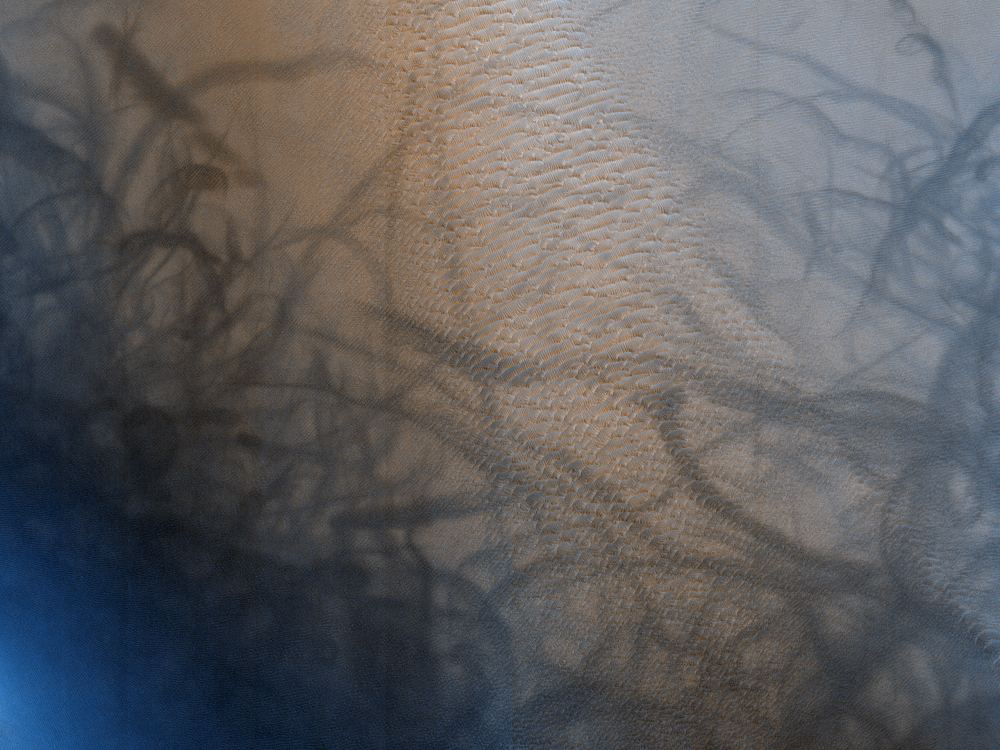
There may be no life on Mars, but there’s still a lot going on there. The Martian surface is home to different geological process, which overlap and even compete with each other to shape the planet. Orbiters with powerful cameras give us an excellent view of Mars’ changing surface.
Continue reading “Dust Devils Have Left Dark Streaks All Over This Martian Crater”
